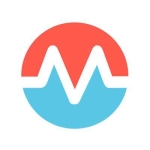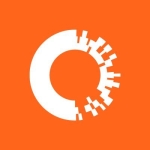What is our primary use case?
We have a platform of about 300 virtual machines, and most of the technology was very old, pre-existing legacy technology. We needed a world-class hyperconverged solution that would provide us with the ease of migrating these virtual machines and allow us to have a hybrid platform in the long term. We wanted some of the things in the private cloud and other things in AWS, which is the public cloud that we have.
How has it helped my organization?
We have a local partner and all the support from the vendor. It has been a remarkable experience. The product is very easy to use, and the roadmap has been executed transparently. The administration has been quite fast. There are many things that were totally neglected, and we had to open some support cases. They have been responded to quickly and in a timely manner. It has been a success.
We have much better performance and efficiency. The uptime of the servers has also increased a lot. We have practically zero outages. It means that our service, which is key in the health industry in our country, is much more stable and has much better public reception. We are one of two companies that provide these transactional services so that people can receive discounts from their insurers when having exams or medical consultations. We serve more than 90% of the country's population for health and connect all companies that give these discounts or health benefits. Our government has a plan with an entity called Fonasa. It is the National Health Fund, and it provides health financing services to practically the entire country. We make the connections between hospitals, clinics, and this National Health Fund to give online discounts at the time of care. Therefore, the uptime has to be very close to 100%, and this solution has helped us get very close to that number.
In my country, we have very good communications technology and data transmission speeds, but when we have a platform that is out of our reach, such as a regional AWS, we always have latency problems. There are speed problems. At times, there are crashes, micro outages, etc. A very good thing about Nutanix is its speed and performance. We are very eager to try the new features it has. We started with a specific project focusing on the most critical production and the budget. This year, we will be able to cover the entire platform and all the server hardware and utilize all the features of Nutanix Cloud Manager. We are going to do several things in the short term.
Faster outcomes are important taking into consideration that people are seeking medical attention, and there are many people. When the time comes to make the payment, they access our transactional services through the authentic application by using a fingerprint or making payment online. If we do not have a platform that is very fast, there is a delay and slowness in all clinical centers. When the lower layers that are not in Nutanix begin to suffer service degradation, all the health service centers automatically start calling us and telling us that the service is not working as it should, and people start to get impatient. Therefore, one of the critical pillars for what we do is that all the processing is done very fast.
Using Nutanix Cloud Manager’s built-in playbooks freed up time for our IT team to focus on other tasks or projects. One of the reasons why we decided on this solution was the amount of prior knowledge that exists. It is not only in terms of the knowledge base and the use cases of other clients but also in terms of everything that helps you. There are pre-built capabilities to make your operations much faster and spend a lot less man hours to manage. We have managed to free up resources and dedicate ourselves to more complex tasks. The playbooks also help me to be able to have a backup within the team. It is very easy for anyone to take the playbooks and apply them, and I can dedicate myself to other things.
In terms of time savings, at first, there were less time savings because we had to "oil the wheel", but now, I have been able to relieve 25% to 30% of people's burden. When we manage very old legacy platforms, we need a lot of specific knowledge and a lot of hours because what we do takes time. If I need to create a machine, I have to load a backup. It takes a long time. I lose a lot of time while the person is monitoring the process. On the other hand, with Nutanix Cloud Manager, it is very unattended. I click on it, and I can do other things because I know that the process will finish in a timely manner.
We want to grow, and we want to have more cores, more nodes, and a 100% migration at the end of this year. The truth is that everything that the solution offers helps with this roadmap and its execution. The migration is very fast and well-supported. We are very happy.
What is most valuable?
There is the ease of being able to use templates. We can create virtual machines from scratch very quickly. We can use a script or make a copy. Generating backup is very easy. Training is also available to achieve a good skill level. The learning curve is short.
What needs improvement?
We need to get more training and achieve much more consistent training. There is training, and there are courses, but in local terms, we are missing something that would allow us to have a more widespread training program. That could be an improvement area for me.
For how long have I used the solution?
We have been using Nutanix Cloud Manager for six months.
What do I think about the stability of the solution?
It is as per very high standards of the industry. It is at an almost perfect level.
What do I think about the scalability of the solution?
I have not had the need to take advantage of the scalability, but I am hopeful that there will not be any problem. I am hopeful that it will be quite smooth. The product works quite well. They have been on the market for many years. It is already a very solid product, and growth is supported.
How are customer service and support?
There is a very large knowledge base. The response times and service are also very fast. We have opened very few tickets, and they were resolved quite quickly. When we opened the first ticket, we were inexperienced in the support flow. Walter helped us by making contact with a technician who called us by phone to resolve the problem online with us. Unlike other products that only offer communication via ticket, we had a phone call that helped us solve the problem very quickly. That turned out very well.
How would you rate customer service and support?
Which solution did I use previously and why did I switch?
We had Rancher. We were about to use VMware, but almost our entire platform was on-premises. We had virtualization but on-premise. It was difficult to administer.
How was the initial setup?
We still have a significant percentage of the platform on-premises. We have already migrated 50% to 60% to Nutanix. For the regional services that are in Ecuador, Colombia, and soon in Mexico, we have AWS.
I was there when the project started. I believe that every implementation has some moments when there is difficulty. That is why one has to have a partner who knows the product and is experienced in migrations and initial implementation. In our case, it was not so complex. The equipment was arranged, and the initial setups were made. The IT team was trained, and the provider helped us with all the migrations and environment preparation. They also trained us and helped us to learn. I did not see any problems along the way that made us say " Oh, we will have to replan.” It was quite smooth, and deadlines were met.
What about the implementation team?
We used a local partner who brought me to .NEXT24. The company is called W-Systems. They are a local partner that offered us the solution and through which, we acquired Nutanix.
Their technical staff helped us throughout the implementation, and we have had very good results. Their representative, the general manager, Walter Zunkel is the one who invited me to attend .NEXT24. We have been attending sessions and talks, and we have been able to do a lot of networking, it has been very productive and very beneficial.
What was our ROI?
It allows me to lower the fixed costs that I have per data center. There is also the possibility of relocating the man hours that I have freed up to projects of much more complexity. That may not be an immediate monetary return, but it does allow me to make a better investment of my team's time.
What's my experience with pricing, setup cost, and licensing?
It is an expensive solution, but one has to make the trade-off between what you want to achieve and what you are willing to pay.
There is a return on investment in a short time. When you make an investment of this magnitude, you expect a return within three years, but it is much earlier here. I measure it in terms of what payments have decreased for the data centers. I am closing one of the data centers because I no longer need to have those physical machines, so that is a saving, and it allows me to leverage the expense that it has. In terms of cost, you have to make a large initial investment, but it provides a good return on investment.
Which other solutions did I evaluate?
We evaluated three alternatives. We had VMware and the other two, but I was not part of the decision-making, so I do not know which other two products they considered.
I was not involved in the evaluation from the beginning, but I saw the results. When you make a comparison and choose a vendor with whom you are going to have a relationship for many years, you have to evaluate the cost. You have to evaluate technical capabilities, and you have to evaluate benefits related to the business.
I believe that one of the things that made Nutanix win by far in the proposals is its ease, short learning curve, and very natural, organic, and intuitive adoption within the team. The costs were not so high. These solutions are obviously not cheap, but one has to be prepared for that. For me, it is cheaper to pay a lot of money for a good solution than to have to explain to the government about a service that was down for several hours. Nutanix is a platform that has a very short learning curve. Growth occurs in a very organic way. There are all new features. It is not necessary to educate ourselves much. The dashboards are super easy to build. The fact is that it is a world-class solution. I am very happy with it.
Nutanix Cloud Manager's setup, learning curve, and ease of use were important when deciding on a cloud management solution. The most important thing is the learning curve. I need people to start producing very quickly. The integration characteristics, the compatibility, and the backward compatibility with legacy technologies are other important things. The ease of migration and integration is also important. It is easy to take technologies that are no longer in use, make an evolution, and migrate them to Nutanix. It should also be easy to integrate components that are on other platforms or other architectures. These were several features that made us decide on Nutanix Cloud Manager.
What other advice do I have?
I would rate Nutanix Cloud Manager a nine out of ten. There is always room for improvement.
Which deployment model are you using for this solution?
On-premises
Disclosure: My company does not have a business relationship with this vendor other than being a customer.

















